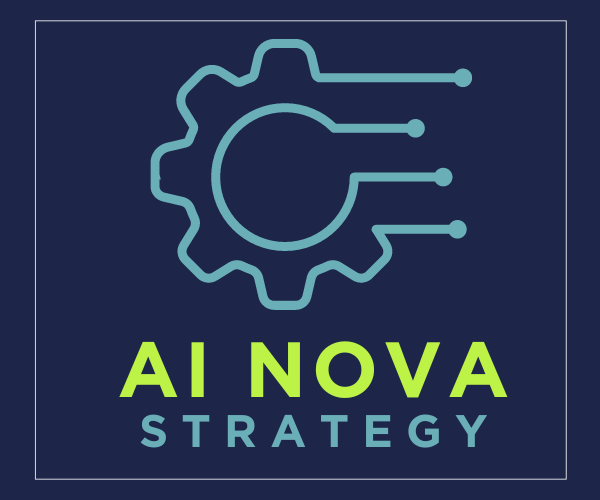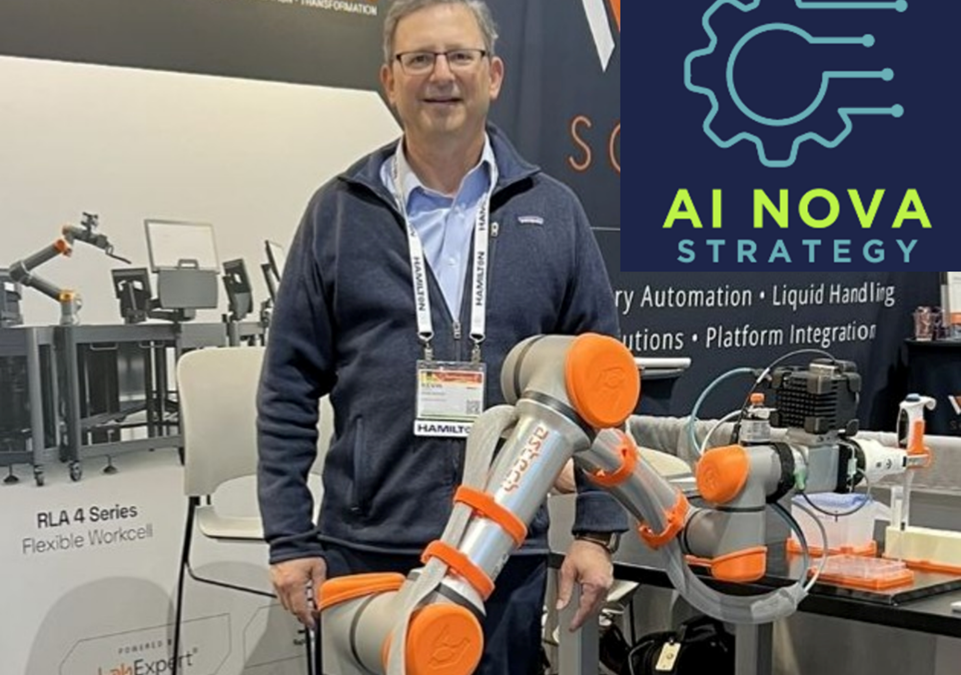February 3, 2025
By Kevin Hacker
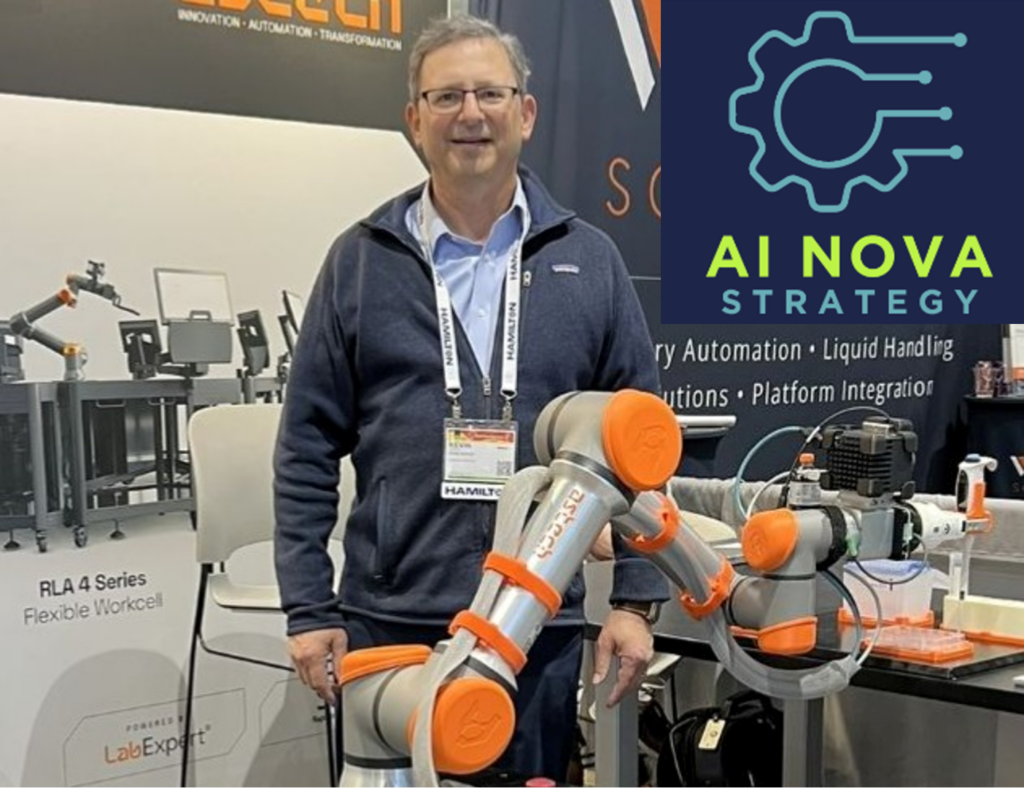
Overhead microwell plate conveyers
254 discrete assays running at once.
2 million wells from 2 million cellular experiments analyzed/week – many terabytes of imaging data
The 35th fastest supercomputer on the top 500 list.
Above from Patrick Collins, Director of Automation at Recursion, talk at SLAS.
Recursion at leader in AI automation for drug discovery.
Dr. Collins said that speed is their most important driver for automation, and facilitating complex workflows is their second important driver. He likened their processes to those of a monk working, a printing press, and an ink jet printer: experiments with manual pipetting, automated repetitive tasks, and automated varied tasks. For speed, they have autonomous mode automation when no one is in the lab. The Recursion paradigm, like that of other companies at the conference, was design, make, test, and learn (or analyze).
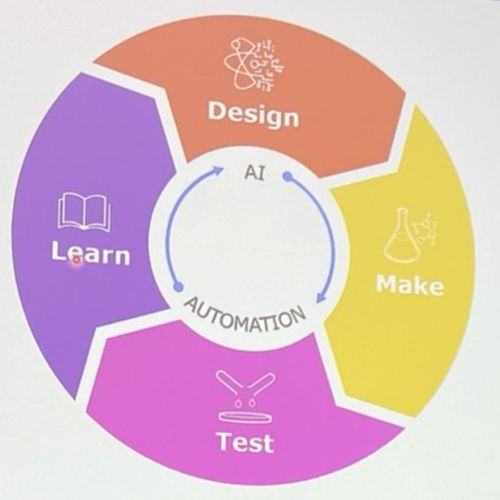
Recursion
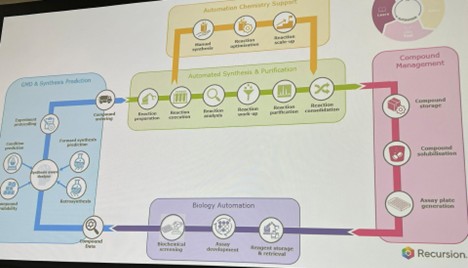
At the meeting, Recursion had hands down the most impressive AI and automation platform.
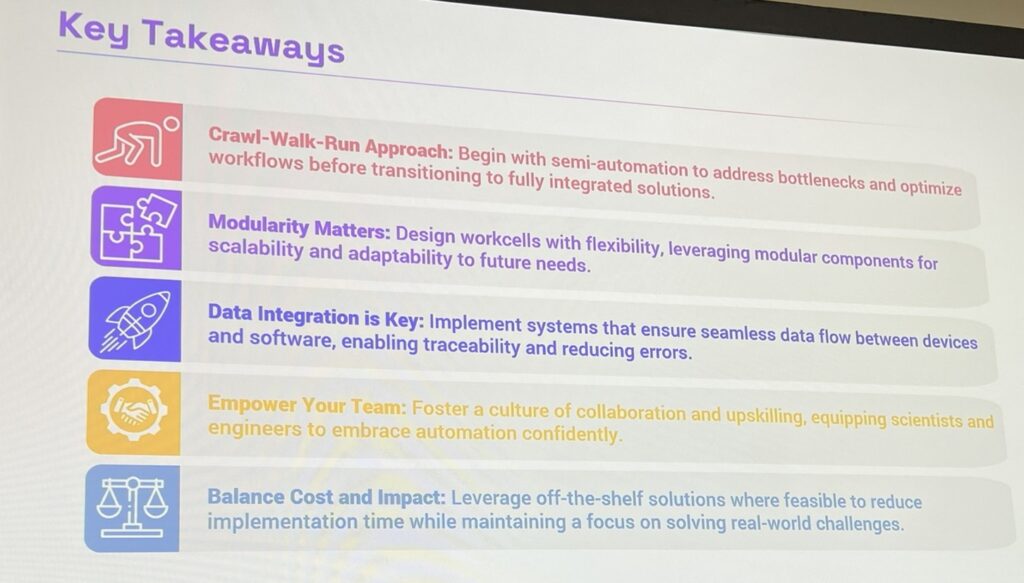
Key automation takeaways from Cellino Bio
Cellino is a personalized human cell company. Dr. Jesse Mulcahy, Head of Automation at Cellino, summarized their key takeaways in a slide that resonated with many other talks.
Robots trained with machine learning
The exhibit showroom had many vendors (like Gibson and Ginkgo Bioworks) with stationary robotic arms and autonomous mobile robots (AMR)(High-Res Biosolutions and Veon Scientific). The problem with AMRs is that they are slow so they don’t run onto people. High Res had a robot with manual mobility. The robots at the conference were trained with machine learning (ML) an AI subgroup. Machine learning enables computers to learn from data and make decisions or predictions without being explicitly programmed to do so.
The power of Generative AI (Gen AI) in digital connected labs.
Speaker Matt Gafenco, Customer Solutions Manager at AWS, said, “9 out of the 10 pharmaceutical organizations globally use AWS for generative AI and machine learning, and it’s more essential than ever that you have a foundational data strategy, bridging the gap between what you have already and a new architecture to enabling the lab of the future.”
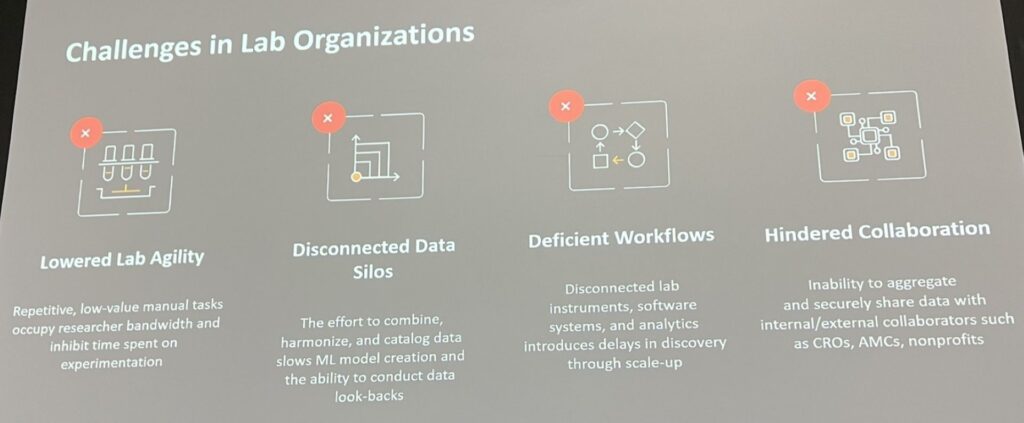
He outlined the challenges many labs face and where they see the most benefit of GenAI and ML.
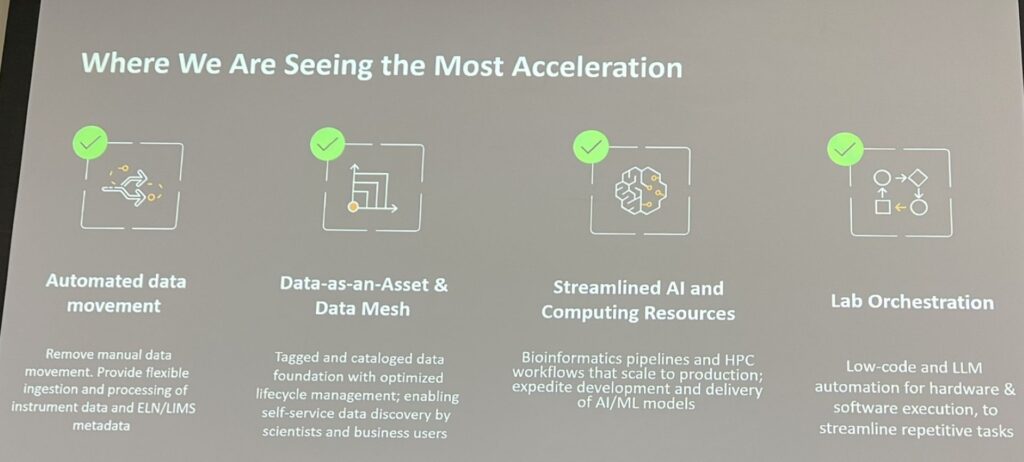
He said that GenAI can be leveraged to automate repetitive and time-consuming tasks in the lab, freeing up scientists to focus on more creative and innovative work. Some examples provided include:
- Summarizing the latest scientific literature using natural language processing, allowing researchers to quickly process and analyze new information.
- Automating instrument operational efficiency monitoring and troubleshooting, reducing the need for manual intervention.
- Generating synthetic data for clinical trials and other experiments, reducing the burden of data collection.
Amazon Bedrock and AWS’s generative AI assistant, Cubby, were presented as tools to integrate AI into existing systems, fostering innovation and efficiency in lab operations.
Summary
In the healthcare and life science industry, automation and AI are speeding up the generation and analysis of data at a truly remarkable new rate as evidenced by the talks and exhibits at the SLAS conference this year in San Diego. Cutting-edge technologies, including robotics, GenAI, cloud computing, and IoT connected devices are converging to drive this new era of drug discovery.
